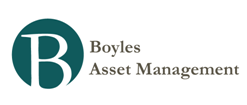Howard Marks Memo: Tell Me I’m Wrong
My readers treat me well. They indulge my penchant for dissecting the past, and they send kind messages of encouragement. To repay their generosity, I’m going to venture into something I usually avoid: the future of the U.S. economy.
This memo won’t be about the future in general, just the elements I find worrisome. As I see it, every investor is either predominantly a worrier or predominantly a dreamer. I’ve come clean many times: I’m a worrier. By saying that, I absolve myself of having to describe the whole future. I’m going to cover the negatives, starting with the immediate and ending with the systemic (some of the latter repeats themes from “What Worries Me,” August 28, 2008). For the other side of the story, I’d suggest you consult the optimists who seem to be in charge of the markets these days.
....................
Excerpt:
Reduced faith in the dollar means it would take higher interest rates to attract non-U.S. buyers to dollar investments. And, even domestically, (a) one of these days the government will stop holding rates down and (b) higher inflation would require rates to rise to compensate for the fact that the dollars with which debts are repaid will buy less. For all these reasons, I think investors must consider the prospect of higher inflation, dollar weakness and higher interest rates.
What to do about them? The list of possibilities is long:
· Buy TIPS.
· Buy floating rate debt.
· Buy gold (but only at the “right” price, and what’s that?)
· Buy real assets, such as commodities, oil and real estate (ditto).
· Buy foreign currencies.
· Make investments denominated in foreign currencies.
· Buy the securities of companies that will be able to pass on increased costs.
· Buy the securities of companies that own commodities, or that own assets denominated in foreign currencies.
· Buy the securities of companies that earn their profits outside the
· Hold cash (to invest once interest rates have risen).
· Sell long-term bonds (and possibly go short).
These are the actions that can profit from – or that provide the flexibility to adjust to – increased inflation, a decline in the dollar and increased interest rates, all of which are interconnected. The most important one is the last one: long-term bonds could suffer worst in an inflationary, higher-rate environment, especially given today’s low starting yields.
One final point: When I provide this answer to the frequent question about inflation, I ask people whether they agree. Usually they do. Then I ask how much of their portfolio they’re willing to devote to protecting against these macro forces. If their answer is 5%, 10% or 15%, I point out that that’s pretty close to doing nothing. The question is whether you’re willing to devote at least 30-40%. Few people are.
But that’s the thing: It’s easy to say, “I’m worried about inflation.” It’s something very different to say, “I’m worried enough about inflation to do something meaningful about it.” Let me know when you decide how much you’re willing to devote.
- Richard Duncan: Wealth Preservation Through Diversification
The excerpt below is from the final chapter of The New Depression by Richard Duncan on inflation and deflation. Wealth Preservation through Diversification The hard truth is that it is not easy to preserve wealth. If it were, the families who were wealthy...
- Wcam - Qe2: Inflate Or Die!
While many argue that quantitative easing can’t go on forever, Fed Chairman Ben Bernanke argues that it can go on as long as it takes, even if it requires further expanding the scale of asset purchases or expanding the menu of assets that it buys. Whether...
- Inflation May Be Coming. Time To Look For A Hedge. - By Whitney Tilson And John Heins
Because inflation hasn't afflicted America in some 30 years, it's worth reviewing what rising prices might mean for stock investors. In a 1977 article on the subject in Fortune, Warren Buffett went to great lengths to disabuse shareholders of...
- Advisor Perspectives: Au Revoir Jean-marie Eveillard: A Final Interview
Which worries you more – a decline in the dollar, rapid inflation, or deflation? How are you positioning your portfolio to defend against these scenarios? We have many worries, but we are not positioned against any particular outcome. Our top-down...
- Is The Medicine Worse Than The Illness? - By James Grant
Barely nudging Mr. Madoff out of the top of the news was the Federal Reserve's announcement last Tuesday that it intends to debase its own paper money. The year just ending has been a time of confusion as much as it has been of loss. But here, at...

